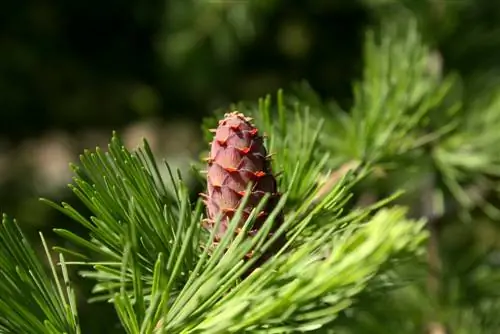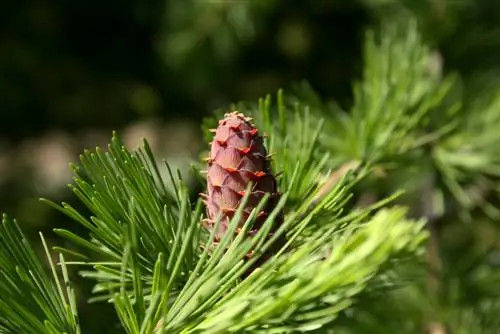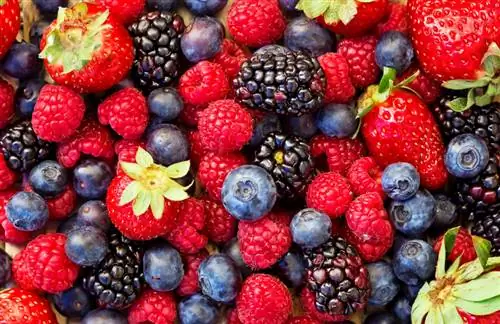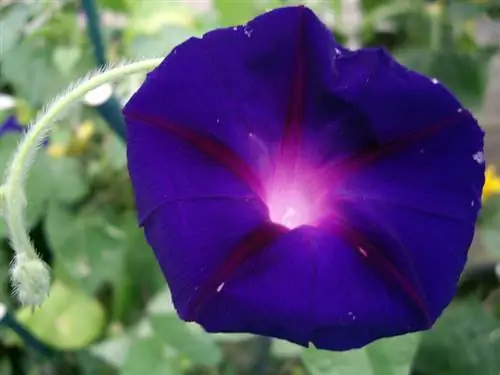- Author admin [email protected].
- Public 2023-12-16 16:46.
- Last modified 2025-01-23 11:21.
The leaves of conifers have a very different appearance depending on the species and variety: They can be wide or flat, pointed or round, long or short, hard or soft. There are also different colors, such as green, blue, and shades of yellow. With such diversity you can create a lot of variety in the garden.

Which conifers have soft needles?
Coniferous trees with soft needles include the European larch (Larix decidua), the common juniper (Juniperus communis), the western arborvitae (Thuja occidentalis) and the Douglas fir (Pseudotsuga menziesii). These species are ideal for the garden and create variety in shape and color.
The most beautiful conifer species with soft needles
Coniferous trees do not necessarily have to have sharp, piercing needles. Instead, there are many beautiful species with soft needles for the garden.
European larch (Larix decidua)
The European larch probably has the softest needles, which is also the only deciduous conifer. In autumn, the flattened and very flexible needles, which are up to three centimeters long, turn golden yellow and are shed. However, the forest tree, which has become rare, only finds space in very large gardens or parks - it can grow up to 40 meters high.
Common juniper (Juniperus communis)
Some varieties of common or common juniper have fan-shaped branches with flattened, needle-shaped leaves. The varieties 'Green Carpet' and 'Repanda' in particular offer a rather atypical appearance with long, soft needles. Soft needles can also be found on other juniper species such as the creeping juniper (Juniperus horizontalis) and the Pfitzer juniper (Juniperus x pfitzeriana). Other species and varieties can have very sharp and hard needles.
Occidental tree of life (Thuja occidentalis)
The tree of life, also known simply as “Thuja”, has soft, scale-shaped leaves. They are pressed tightly against the branches, dull green on top and paler underneath. In winter they often have an olive to bronze color. There are also numerous varieties with yellow needles, for example 'Sunkist', 'Golden Globe' or 'Europe Gold'. The strong aromatic scent that comes out when the needles are rubbed between two fingers is also typical.
Douglas fir (Pseudotsuga menziesii)
The Douglas fir, often referred to in this country as the Douglas fir, has very soft, blunt needles. These stand alone and are up to four centimeters long. If you take a few needles between two fingers and rub them, they give off a fresh scent reminiscent of lemons. The Douglas fir originally comes from North America and can grow up to 60 meters high in good conditions. Accordingly, this tree is only suitable for large gardens or parks.
Tip
A rarity is the golden larch (Pseudolarix amabilis), which is also summer green and whose needles turn a wonderful golden yellow in autumn. Despite this similarity, the species is not related to the native larch.






